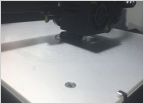-
Welcome to Tacoma World!
You are currently viewing as a guest! To get full-access, you need to register for a FREE account.
As a registered member, you’ll be able to:- Participate in all Tacoma discussion topics
- Communicate privately with other Tacoma owners from around the world
- Post your own photos in our Members Gallery
- Access all special features of the site
snake venom halts cancer cells. possibly.
Discussion in 'Off-Topic Discussion' started by truckboattruck, Jul 9, 2011.


 Alone in the Wilderness
Alone in the Wilderness Any electronics geniuses on here?
Any electronics geniuses on here? Maglite 50% off!
Maglite 50% off! So I wrote a book...
So I wrote a book... Any product recommendations for a new pup?
Any product recommendations for a new pup? TacomaWorld Secret Santa Wish List 2019
TacomaWorld Secret Santa Wish List 2019








































































